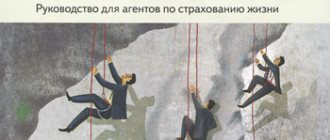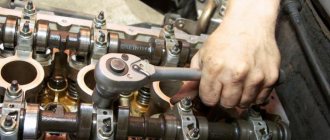A mechanic is a general specialist responsible for the technical condition and repair of equipment at a manufacturing enterprise. What exact functions an employee applying for this position should perform is decided by the company management together with a specialist from the HR department. The main provisions of the document should not contradict the legal norms of the Labor Code.
Mechanic's position depending on the type of activity
The functional responsibilities of a mechanic depend on what field of activity he works in and what position he occupies, namely:
- Mechanical engineer.
- Mechanic for releasing vehicles onto the line.
- Chief mechanical engineer.
- Driver mechanic.
- Garage (vehicle) mechanic.
In addition, the specifics of the work of a specialist of this type depend on the type of equipment or vehicle that is under his control. For example, a marine mechanic, among other things, must undergo special military training and have appropriate education, which includes knowledge of the science of shipbuilding. Each company has the right to set its own requirements for a mechanic job applicant, which they stipulate in the relevant contract, namely the job description. Before signing an employment contract, the employer must familiarize the future employee with this type of document.
Let's consider the features of the functional and job responsibilities of a mechanic, depending on the type of activity.
https://youtu.be/rtETxrxgI88
Sample of a typical job description for a motor vehicle mechanic
In the category of general provisions, the concept of a motor vehicle mechanic, the classification of this worker and the requirements for applicants are revealed. The next section sets out the employee's responsibilities, after which it regulates what he is entitled to. The last paragraph indicates the transport worker's responsibilities. The combination of these information blocks makes up a ready-made form, according to which the employee’s labor process is organized and assessed. The job description of the chief transport mechanic is drawn up by the manager who has the specialist at his disposal.
Job responsibilities of the chief mechanic
- An employee holding the position of chief mechanic is required to organize and conduct scheduled and, if necessary, urgent inspection of the technical condition of equipment or vehicles at the enterprise.
- Draws up a work and vacation schedule for employees under his supervision.
- Evaluates the technical condition of equipment and vehicles in the garage. Draws up an estimate for its repair and submits it to higher management for approval of the repair plan.
- The responsibilities of the chief mechanic also include organizing the replacement of old equipment with new ones and carrying out technical testing of it in operation.
- Once every six months, conduct safety briefings, as well as convey information to your subordinates about new work instructions and orders.
- Monitors compliance with safety regulations and working conditions.
- Controls the work process of subordinates, namely, how correctly they operate the equipment and how well they perform their functional duties.
- Within the deadlines established by management, prepare a report on the technical condition of the equipment and the costs spent on its repair.
- Develops and implements a plan to improve the quality of operation of equipment or other technical means for which he bears documented responsibility.
The mechanical engineer, whose responsibilities include optimizing production, bears special responsibility for the technical base of the organization. Let's take a closer look at what the employee holding this position is responsible for.
Job description of the chief mechanic of motor vehicles
The functions of a mechanic are closely related to the operation of vehicles. The presence of such vehicles determines the creation of a mechanic position.
This document defines the authority of the specialist and his functional responsibilities. The instruction consists of several logically interconnected blocks. Basically, when creating documents of this type, the following structure is used:
The general provisions are described first. This part includes the basic requirements that apply to employees;
- responsibilities. This is the most important part. It specifies the employee’s functions and details what he should do in his daily activities;
- rights. As a rule, these are standard rights that are approximately the same for both mechanics and other technical personnel;
- responsibility. This is an important part of the document, which establishes the employee’s obligation to compensate for the harm caused to the company, as well as strictly adhere to internal regulations.
The formation of each part of the document is carried out by the employer. He has the right to include any provisions he considers appropriate.
Key provisions and responsibilities
The requirements that a given specialist must meet are determined by his responsibilities. In this sense, several basic provisions should be indicated:
- Having completed special training, courses, as well as having experience and skills;
- Ability to understand vehicles, repair them and send them to work;
- Knowledge of vehicle repair and maintenance technology, ensuring all work processes;
- He must be able to correctly draw up documentation for vehicles. These are reports of defects, memos for employees.
Failure to comply with these requirements may result in termination of the employment relationship with the employee.
The list of duties is the essence of the mechanic's job description. Among his main responsibilities are:
- checking the technical condition of vehicles and releasing them to work. The release should not pose a threat to people and the transport itself. Therefore, release is possible only if the vehicle is in excellent condition;
- repair and maintenance. As a result of the activities of a specialist, vehicles must undergo periodic maintenance;
- he must ensure the coordinated and efficient work of the entire garage team. If violations of labor discipline are detected, the employee is obliged to inform management about this by submitting memos;
- accept technical equipment after repair, as well as return them for repair if necessary. At the same time, he must inform management about the need for repairs.
An additional block of responsibilities could be the inclusion of a section on the preparation of technical documentation. These are time sheets recording the time spent on equipment, repairs completed, and so on.
Rights and responsibilities
The job description includes separate sections regarding the rights and responsibilities of employees. Rights include the right to be provided with necessary equipment and a workplace. This right is justified, since the master must be able to work normally and respect the interests of management.
Technical personnel may be subordinate to him. Accordingly, the mechanic has the right to record facts of conscientious performance of official functions and petition management to reward these persons.
He has the right to receive correct and complete information about the issuance of orders related to his activities.
Job responsibilities of a mechanical engineer
- Carry out quality control of equipment and vehicles at the disposal of the organization.
- Analyze the operating efficiency of equipment. Based on the results of the study, draw up a plan to improve its performance, which must be agreed upon with the chief engineer.
- Submit a request for the necessary components for equipment repair or purchase.
- Once every 2-3 months, check how correctly the equipment under his responsibility is being operated.
- Provide monthly reports on work done and scheduled checks to the chief engineer.
- Must make suggestions and recommendations to improve performance in shifts by providing facts, drawings and diagrams.
It is worth noting that the mechanical engineer is responsible for equipment breakdowns and production downtime. The responsibility of the employee in this position is to prevent this incident from occurring.
Chief mechanical engineer
The chief mechanic is a specialist responsible for the operation of equipment in production. He belongs to the category of leaders. His tasks include organizing, monitoring the implementation of work and measures necessary to maintain equipment in working condition, carrying out timely repairs and proper operation.
The functional responsibilities in the job description of the chief mechanic of an enterprise and an ordinary specialist are different.
The chief mechanic manages the entrusted units and services. He coordinates joint work with contractors and related organizations carrying out repair work, promptly provides them with the necessary technical documentation, and participates in compiling a list of equipment requiring major repairs.
The chief mechanic inspects:
- quality of work performed, rational use of materials, equipment, storage conditions;
- inspections and provision of lifting mechanisms and other objects to state technical supervision authorities;
- making changes to equipment documents.
The chief mechanic is involved in:
- studying the causes of failure, increased wear and tear of equipment, and downtime;
- identifying the causes of accidents, failures, developing and implementing measures to prevent and eliminate them;
- drawing up applications for the purchase of equipment.
Municipal educational institution Timsheri Secondary School
Approved
By order of the Municipal Educational Institution Timsher Secondary School
Job description
vehicle mechanics
- General situation.
1.1. A vehicle production mechanic is hired and dismissed from work by order of the director
1.2. Reports directly to the farm manager. Additional instructions may be received from the director
1.3. The work is guided by these instructions, regulations, instructional materials, and school orders.
2 Job responsibilities.
2.1. Ensures trouble-free and reliable operation of vehicles on the line, releasing them onto the line in accordance with the schedule and identifying faults when receiving them from the line at the end of work.
2.2. Monitors the correct operation of vehicles, carries out technical supervision over the condition of the bus on the line, identifies the causes of malfunctions and accepts
measures to eliminate them.
2.3. Organizes the transfer of vehicles to repair shops and accepts them into operation with control of the work performed.
2.4. Monitors the quality and timeliness of vehicle maintenance work in accordance with maintenance schedules.
2.5. Instructs the driver before being released onto the line.
2.6. Fills out and issues waybills.
2.7. Takes direct part in presenting vehicles during a technical inspection by the State Traffic Inspectorate.
2.8. Performs daily technical inspection of vehicles entering the line and returning to the garage.
2.9. Does not allow buses to be released onto the line in an unsanitary condition (i.e., unwashed interiors, etc.).
2.10. Inspects the appearance of vehicles.
2.11. Monitors the speedometer system.
2.12. Performs fuel control.
2.13. When entering the line, checks the driver's documents for the right to drive the vehicle and documents for vehicles.
3. Right by position.
3.1. Do not allow vehicles with technical faults onto the line.
3.2. Prohibit the release of vehicles that have not undergone periodic inspection or are not registered in accordance with the established procedure.
4. Must know.
4.1. Design, purpose, design features, technical and operational data of rolling stock of road transport.
4.2. Orders, regulations, instructions and other governing normative materials relating to the activities of the school.
4.3. The procedure for releasing a car onto the line.
4.4. The procedure for handing over vehicles for repair and receiving them after repairs.
4.5. Internal labor regulations.
4.6. Legislation on labor and labor protection of the Russian Federation.
4.7. Rules and regulations of labor protection, safety precautions, traffic regulations, industrial sanitation and fire protection.
4.8. Regulations on the maintenance and repair of transport at the enterprise, melting the transportation of passengers.
Hello subscribers and casual readers of Andrey Noak's Blog. Today, let's try to break down what a mechanic should do in a production workshop, the responsibilities of a mechanic at an enterprise, and in general, who is a mechanic and what does he eat with...
Responsibilities of the driver
Unlike his colleagues, the driver is responsible for the vehicle issued to him by the company. His responsibilities include:
- Drive a car provided by the organization.
- Before going on the line, receive a waybill with a mark indicating that the driver and vehicle have undergone a pre-trip inspection.
- Provide the car to the garage mechanics for scheduled technical inspection within the established time limits.
- Carry out scheduled oil changes, gasoline refills and repairs.
- Submit a request to the mechanical engineer for the necessary spare parts.
- Submit a report on the consumption of fuels and lubricants.
In a word, the job responsibilities of a vehicle mechanic are to ensure that the vehicle he controls is in technically sound condition. He is also financially responsible for the vehicle provided. If the car breakdown occurred through his fault, then he makes the repairs at his own expense.
Job description of a mechanic for vehicle repair
Repair responsibilities are a narrower area of activity. Accordingly, the job description provides a more detailed description of the conditions and procedure for repairs.
This may include conducting regular inspections of equipment and identifying faults. If they are identified, the specialist is obliged to report this and receive funds to purchase auto parts. Upon receipt of them, he must ensure that they are installed correctly.
The main task is to ensure accident-free operation of transport.
Job description of a mechanic for vehicle production
Putting it on line means checking the technical condition of the car. The employee is required to carry out such checks daily. Without his approval, release onto the line is impossible.
Functional responsibilities of a mechanic for releasing vehicles for flight
Due to the increasing number of accidents caused by vehicle malfunctions, the Russian government in 2020 tightened pre-trip inspection. Therefore, mechanics involved in this activity were assigned additional responsibilities, namely:
- The mechanic must carefully inspect the vehicle. The technical equipment must be in full working order.
- Checks whether the driver of the car has the appropriate accompanying documents and a driver’s license.
- Must report to his immediate superior about the condition of the vehicles in the enterprise’s fleet, as well as violations in the actions of drivers.
- Maintaining necessary documentation.
- Installs a seal on the speedometer and gas tank.
- Checks instrument performance against existing standards.
- Before being released onto the line, he must ensure that he is cleared to work by a medical professional.
Improper performance of one's duties carries with it responsibility, which can be expressed in several forms.
History of the profession
Since ancient times, people have invented mechanisms that helped them in hunting, farming, and during military operations. These devices gradually became more complex and required repair and maintenance. The formation of an engineering approach to working with various mechanical structures began in Ancient Greece. The works of Archimedes are known to describe the principles of operation of lever mechanisms, the creation of a screw for lifting loads, igniting mirrors, and catapults.
In ancient Rome, these methods were used to build aqueducts to supply water to cities. In Russia, the development of mechanics began under Peter I with the opening of an artillery and naval school - the “School of Mathematical and Navigational Sciences,” which laid the foundations for engineering education.
https://youtu.be/62aEbR3fnEQ
Types of punishment for a mechanic who fails to perform his duties properly
1. Administrative responsibility. Implies an oral or written reprimand.
2. Material. If the company suffers losses due to the fault of an employee, he is obliged to compensate them. In the worst case scenario, he could be fired.
3. Criminal. If, due to improper performance of the mechanic’s professional duties, moderate harm to the health of one or more people was caused. For example, if a mechanic puts a technically faulty vehicle on the line, which as a result gets into an accident with human casualties.
Changes to the main provisions in the job description
The employer reserves the right to change the instructions developed by him with the functional responsibilities of a mechanic. This is due to the fact that Russian legislation constantly adopts acts and standards on safety at the enterprise and on the road. A representative of this profession is obliged to inform each of his employees individually and strictly under a personal signature.
A profession such as a mechanic is quite in demand nowadays. However, this position also implies greater responsibility in the field of production and transport logistics, education and work experience of at least 3 years.
Mechanical engineering position. Conditions and evaluation of work. Job description of a mechanical engineer
01.08.2019
Modern society can no longer cope without all kinds of technology. Most processes have long been automated, which allows us to quickly and efficiently produce products of any quality. However, as we know, there is no equipment that does not wear out and does not require replacement. And then mechanics come to the rescue.
The most advanced lithography tools currently use ultraviolet light to print wires up to 100 billion meters thick. To give you an idea of what this tiny size means, the diameter of a human hair is about a thousand times the thickness of these threads. Mechanical engineers design machines, alignment systems, temperature control and vibration isolation to make the production of such small and precise integrated circuits possible. In addition to designing cars, airplanes, and other macroscopic systems, mechanical engineers also design microscopic machines.
A mechanic is a specialist who is involved in servicing any type of equipment. He can repair cars, airplanes, electronics and other equipment.
Today, the mechanic profession is in great demand in enterprises that have technical equipment. The responsibilities of a mechanic at an enterprise depend directly on the position he occupies. Let's look at each type of activity in more detail.
These "micromechanical systems" are manufactured using various lithographic and contaminant isolation technologies used in integrated circuit manufacturing, but the final product is a mechanism or mechanical structure rather than an electrical device. Using these methods, machines can be designed with moving parts so small that they are invisible to the human eye and can only be seen through a microscope. As shown in Figure 15, individual mechanisms can be manufactured and then mounted on gears that are no larger than a pollen particle.
The responsibilities of a mechanic include:
- Monitor the operation of instruments and equipment and maintain them in working order.
- Ensure the correct operation of equipment at the enterprise.
- Develop schedules for inspections, tests and preventive replacement of equipment in case of inoperability.
- Preparation of requests for the purchase of various materials and spare parts.
- Determining the degree of wear and tear of equipment and mechanisms requiring major repairs and establishing a procedure for replacing them with newer ones.
- Management of the development of various measures to replace equipment that has become ineffective with more highly productive ones.
- When identifying unused equipment, taking measures to improve its performance, improving the organization of work for repair service workers.
- Detailed responsibilities of a production mechanic can be found in the production job description.
Responsibilities of a driver-mechanic
Driver-mechanic is a specialist involved in driving, repairing and maintaining specialized tracked or wheeled off-road vehicles.
By balancing problem-solving skills, design analysis and execution, real-world applications, and practical technology, the author provides students with a continuing foundation for future research in mechanical engineering. The text covers a variety of applications such as fuses, rapid prototyping, computer-aided design projects, carbon nanotubes, robotics, magnetic resonance imaging, jet engines, automatic transmissions, and solar energy.
The book also has many examples and illustrations to make learning easier, as well as a number of problems and exercises for review. This book introduces an introductory approach to the field of mechanical engineering and gives students an understanding of how engineers design machines and tools that contribute to the advancement of our society.
The driver-mechanic is required to know the material part, technical capabilities and operating rules of the equipment. He is also obliged to keep his controlled equipment in constant readiness for work.
The main responsibilities of a driver-mechanic are:
- Ability to drive a vehicle day and night in all weather conditions.
- Know and follow the rules of driving on and off roads, do not leave or transfer control of the vehicle to third parties without a direct order.
- Follow and carry out your boss’s commands quickly and efficiently.
- Avoid accidents and car breakdowns. If they are identified, immediately inform your supervisor.
- Ensure the safety and correct stowage of transported spare parts and equipment.
- Have a driving license with you.
- Fill out travel documents correctly and accurately.
- Carry out a check inspection of the car before leaving the park, on the road and before starting to drive.
All instructions on the duties of a driver-mechanic can be found at the enterprise upon hiring.
Degree: 3 years Automotive Engineering is dedicated to the study and development of safer, more convenient and efficient vehicles. With a strong focus on technological innovation, this area seeks solutions for performance and behaviour, consumption and emissions, active and passive safety, ergonomics and maintenance.
The course is based on a mechanical engineering foundation where students develop knowledge in materials, structures, mechanisms, manufacturing processes and thermal processes that complement specific knowledge of automotive engineering in terms of vehicle technology, electronics, and legislation.
Responsibilities of a Mechanical Engineer
A mechanical engineer is a specialist with knowledge in the design, operation and manufacture of technical equipment.
The main requirements for admission to this position are knowledge of descriptive geometry, drawing, theory of machines and mechanisms, strength of materials, and industry economics.
To support rapid integration into the labor market, the program has a strong theoretical and practical component based on laboratory exercises. Hours The course is taught during the day, with students able to attend some syllabuses on the after-hours schedule and choose between full-time and part-time.
Protocol on cooperation with the Toyota Technical Education Program. Thus, graduates can enter the labor market after three years and apply for admission to the Order of Engineers or the Order of Technical Engineers. Career prospects. Graduates in automotive engineering can develop activities in automotive design; technical direction in brand representatives; shop management; park maintenance; consulting and training in the field of automotive mechanics; automotive competition, development companies, design, manufacture and assembly of vehicles; among other possibilities.
The main responsibilities of a mechanical engineer include:
- Drawing up lists for major equipment repairs.
- Study of operating conditions of individual components and parts.
- Monitoring compliance with labor protection and safety regulations when performing work
- Filling out applications for the purchase of spare parts necessary for the operation of the equipment.
- Participation in the inventory of production assets, identification of equipment requiring major repairs.
- Quality control of equipment installation, correct storage in warehouses and rational expenditure of funds.
- Taking part in the preparation of proposals for upgrading equipment, introducing means of mechanization and automation of processes, developing plans to improve the efficiency of the enterprise.
- Detailed instructions on the work and responsibilities of a mechanical engineer are provided when applying for a job.
Responsibilities of a line mechanic
Importers and representatives of vehicles and equipment; Multi-brand service and repair companies; Technical training centers for the automotive sector; Transport companies; Technical support specializing in automotive competitions.
Access to public higher education is coordinated by the Directorate General for Higher Education and can be carried out in the following forms: National competition for access to higher education; Local competitions; Special modes; Special competitions; re-entry; Course change and transmission.
The main responsibilities of a line mechanic are to:
- Organizes accounting of all types of equipment, and also prepares documents for the write-off of obsolete equipment.
- Engaged in the preparation of documents for mechanisms for submission to state supervision.
- Monitors compliance with safety regulations while performing work at the enterprise.
- Draws up a schedule for checking and upgrading ineffective equipment at the enterprise, with the aim of restoring or replacing them.
- Monitors the serviceability of equipment at the enterprise. Does not allow emergency situations at the enterprise.
- Performs official tasks of his immediate superior.
Approximate form
I approve (name of the organization, (initials, surname) of the enterprise, etc., its _________________________________ organizational and legal form (director or other official authorized to approve the job description)
The degree in Automotive Mechanical Engineering is well structured and improves contact with the reality of the sector. What I liked most about the course was the strong technical component. In practical practice, the systems, operation and control of vehicles are selected by an experienced teacher, allowing interaction with the workshop environment and the reality of companies. The course intersects classical elements of mechanics with specific knowledge of the automotive industry, balances theory with practice and allows close contact with companies in the field.
"____" _____________200_ M.P.
Job description of a mechanical engineer ___________________________________________________ (name of organization, enterprise, etc.)
This job description has been developed and approved on the basis of an employment contract with
(name of the position of the person for whom this job description has been drawn up) and in accordance with the provisions of the Labor Code of the Russian Federation and other regulations governing labor relations in the Russian Federation.
Nuno Laranjira, Automotive Mechanics student. Being demanding and strict in achieving his goals, the young man worked for some time in the area. However, his desire to go further led him to participate in the course. What are the reasons that prompted you to bet on this course?
What attracts you most to the area? The automotive field fascinates me from the design itself to the excellent technology applied to the vehicle. Does your bachelor's degree meet your expectations? Most teachers are good professionals at what they do and are dedicated to teaching students. What is it like to live and study in Porto?
I. General provisions
1.1. A mechanical engineer belongs to the category of specialists. 1.2. A person with _________________________________ education and work experience _____________________________________________________________________ is appointed to the position of mechanical engineer. 1.3. Appointment to the position of mechanical engineer and dismissal from it are made by order of the manager upon submission of ________________________________________________________________. 1.4. In his work, a mechanical engineer is guided by: - legislative and regulatory documents on the work performed; — methodological materials concerning relevant issues; — the charter of the enterprise; — labor regulations; - orders and instructions of the director of the enterprise (direct manager); - this job description. 1.5. A mechanical engineer must know: - regulatory, methodological and other materials on organizing equipment repairs; — profile, specialization and features of the organizational and technological structure of the enterprise, prospects for its development; — fundamentals of the production technology of the enterprise’s products; — organization of repair service at the enterprise; — procedure and methods for planning equipment operation and carrying out repair work; — a system of scheduled preventive maintenance and rational operation of process equipment; — production capacities, technical characteristics, design features, purpose and operating modes of the enterprise equipment, rules of its operation; — methods of installation and repair of equipment, organization and technology of repair work; — the procedure for compiling lists of defects, passports, albums of drawings of spare parts, operating instructions for equipment and other technical documentation; — rules for acceptance and delivery of equipment after repair; — requirements for the rational organization of labor during operation, repair and modernization of equipment and repair equipment; — advanced domestic and foreign experience in repair maintenance of the enterprise; — fundamentals of economics, organization of production, labor and management; — basics of environmental legislation; — main issues of labor legislation; — rules and regulations of labor protection, safety, industrial sanitation and fire safety. 1.6. During the period of temporary absence of a mechanical engineer, his duties are assigned to _______________________________________________________________________________________________
On the other hand, it is good that higher education institutions are located in the city and are relatively close to each other, even due to their own contacts and friendliness with colleagues from different faculties. What facts marked this experience the most? Communication between people from different cultures, from students to teachers, made me see things differently and with different perceptions. Finally, what advice would you like to give to those considering entering higher education?
The classes will promote the development of students' abstract mathematical reasoning to facilitate the acquisition of basic algebra knowledge necessary for higher education of engineering students and to provide a set of mathematical methods relevant to solving various Engineering problems.
II. Job responsibilities
2.1. The mechanical engineer performs the following functions: 2.1.1. ensures uninterrupted and technically correct operation and reliable operation of equipment, increasing its shift capacity, maintaining it in working order at the required level of accuracy; 2.1.2. organizes the development of plans (schedules) for inspections, tests and preventive repairs of equipment in accordance with the provisions of the Unified System of Scheduled Preventive Maintenance, approves these plans and monitors their implementation, ensures technical preparation of production; 2.1.3. participates in the preparation of title lists for major repairs of equipment; 2.1.4. takes part in the work of recording the availability and movement of equipment, drawing up and processing technical and reporting documentation. 2.1.5. prepares applications for the purchase of materials and spare parts necessary for the operation of instruments and equipment; 2.1.6. provides timely and high-quality repairs and modernization of equipment, work to improve its reliability and durability, technical supervision of the condition, maintenance, repair of buildings and structures, rational use of materials for repair work. 2.1.7. takes part in the preparation of proposals for the modernization of equipment, reconstruction, technical re-equipment of the enterprise, the introduction of means of comprehensive mechanization and automation of technological processes, environmental protection, and in the development of plans for increasing production efficiency; 2.1.8. participates in the inventory of production fixed assets, identifies obsolete equipment and facilities requiring major repairs; 2.1.9. takes part in the preparation of proposals for accounting and planning of workplaces, for the reconstruction of equipment, technical re-equipment of the enterprise’s repair base, the introduction of means of comprehensive mechanization and automation of technological processes; 2.1.10. participates in experimental, adjustment and other work on the introduction and development of new equipment, in equipment testing, in the acceptance of new and repaired equipment, reconstructed buildings and structures; 2.1.11. studies the operating conditions of equipment, individual components and parts; 2.1.12. develops and implements measures to prevent unscheduled shutdowns of equipment, extend the service life of components and parts, interrepair periods, improve the safety of equipment, and increase its operational reliability; 2.1.13. takes part in the study of the causes of increased wear and tear of equipment, its downtime, in the investigation of accidents, the development and implementation of measures for their elimination and prevention; 2.1.14. develops and implements measures to replace ineffective equipment with high-performance equipment, to reduce unscheduled repairs and equipment downtime, to reduce the cost of repairs and its maintenance based on the use of new progressive methods of repair and restoration of parts, assemblies and mechanisms; 2.1.15. controls the quality of equipment installation work, the rational expenditure of funds for major repairs, and the correct storage of equipment in warehouses; 2.1.16. takes measures to identify unused equipment and its sale, improve the operation of existing equipment, organize repair work based on the mechanization of labor and the introduction of advanced technology, improve the organization of work of repair service workers; 2.1.17. ensures compliance with labor protection and safety regulations during repair work; 2.1.18. ______________________________________________________________________________________________.
Head of Division Jorge Santos. The student must be able to: - know and understand the architecture and functioning of the computing environment; — develop algorithms using appropriate programming methodologies; - analyze and develop programs in S. - evaluate programs in S. - assume active learning relationships. collaborative and responsible, ongoing work, individual and group work, and critical application in analyzing and solving problems.
The student should be able to: - Introduce an algorithm, its functionality and adapt it to new requirements. — Having proposed the task of describing your algorithm. — When introducing small programs, describe each of the instructions and the overall functionality of the program.
III. Rights
A mechanical engineer has the right: 3.1. Get acquainted with draft decisions of the management of the enterprise and department relating to its activities. 3.2. Give instructions and tasks to his subordinate employees and services on a range of issues included in his functional responsibilities. 3.3. Monitor the implementation of production tasks, timely execution of individual orders by employees, services and departments subordinate to him. 3.4. Request and receive the necessary materials and documents related to the activities of the mechanical engineer, his subordinate services and departments. 3.5. Submit proposals for improvement of work related to the responsibilities provided for in these instructions for consideration by management. 3.6. Require the management of the enterprise (department) to provide assistance in the performance of their official duties and rights. 3.7. Interact with other enterprises, organizations and institutions on production and other issues within the competence of a mechanical engineer.
Basic concepts of an algorithm 1 Definition and description of algorithms2 Properties of algorithms3 Data types, variables, expressions and operators. 4 Input and output operations5 Conditional and repeating structures Subroutines and functions 1 Function statement2 Passing arguments by value and by reference.
Responsible for the training module is Fernando José Ferreira. Promote teamwork; — Develop capacity to solve a specific problem while developing alternative solutions; — Increase your knowledge in different areas of technology. — critical examination of existing solutions; — promote the use of workshops and laboratories; — Promote the use of computer tools in design and calculations. Provide students with a variety of skills needed to prepare a preliminary project in mechanical automotive engineering.
IV. Responsibility
The mechanical engineer is responsible for: 4.1. within the limits determined by the labor legislation of the Russian Federation, for: 4.1.1. unsatisfactory results of activities related to his functional responsibilities specified in Section 2 of these Instructions; 4.1.2. provision of inaccurate information about the status of implementation of work plans of subordinate services and units; 4.1.3. failure to comply with orders, instructions and instructions from the director of the enterprise; 4.1.4. failure to take measures to suppress identified violations of safety regulations, fire safety and other rules that create a threat to the activities of the enterprise and its employees; 4.1.5. failure to ensure compliance with labor discipline by employees of subordinate services and employees subordinate to a mechanical engineer. 4.2. For offenses committed in the course of carrying out their activities - within the limits determined by the administrative, criminal and civil legislation of the Russian Federation. 4.3. For causing material damage - within the limits determined by labor, criminal and civil legislation of the Russian Federation.
Contribute to the development of product design and solution capabilities in automotive mechanics. Responsible for the training module is Antonio Ferreira da Silva. Applications 2 - Oil hydraulic controls 1 - Pumps2 - Actuators3 - Valves4 - Motors5 - Hydraulic circuits. Course leader Olga Paiva.
The purpose of this course is to provide students with a basic knowledge of materials in terms of the internal structure and physical, chemical and mechanical properties of the main classes of materials available on the market, and in the specific case of metallic materials to develop competence to recognize the influence of chemical composition and processing method in mechanical and technological characteristics of manufactured alloys. Finally, the most important mechanical tests, traction, hardness, impact and fatigue, will be reviewed to determine the basic mechanical properties of materials.
The job description was developed in accordance with _______________________________________ (name, number and date of the document)
Head of the structural unit (initials, surname) _________________________ (signature) “___”_____________ 20__
Agreed:
Head of the Legal Department (initials, surname) __________________________ (signature)
After completing the Materials Science course, students should be able to:. — know, identify and characterize different classes of materials and discuss their importance in the development of Engineering; — select and perform the most appropriate mechanical tests to determine the basic mechanical properties of metallic materials; — interpret the mechanical, physical and chemical properties of metallic materials in the light of their crystalline structure. - know the mechanisms of diffusion in the solid state and the laws that regulate them, and use this knowledge in the interpretation of surface treatments implemented in metals and semiconductor doping; — explain and apply knowledge of crystal structures and solidification in the analysis and interpretation of phase diagrams; — interpret and analyze any binary phase diagram.
I have read the instructions: (initials, surname) _________________________ (signature) “___”________________ 20__








